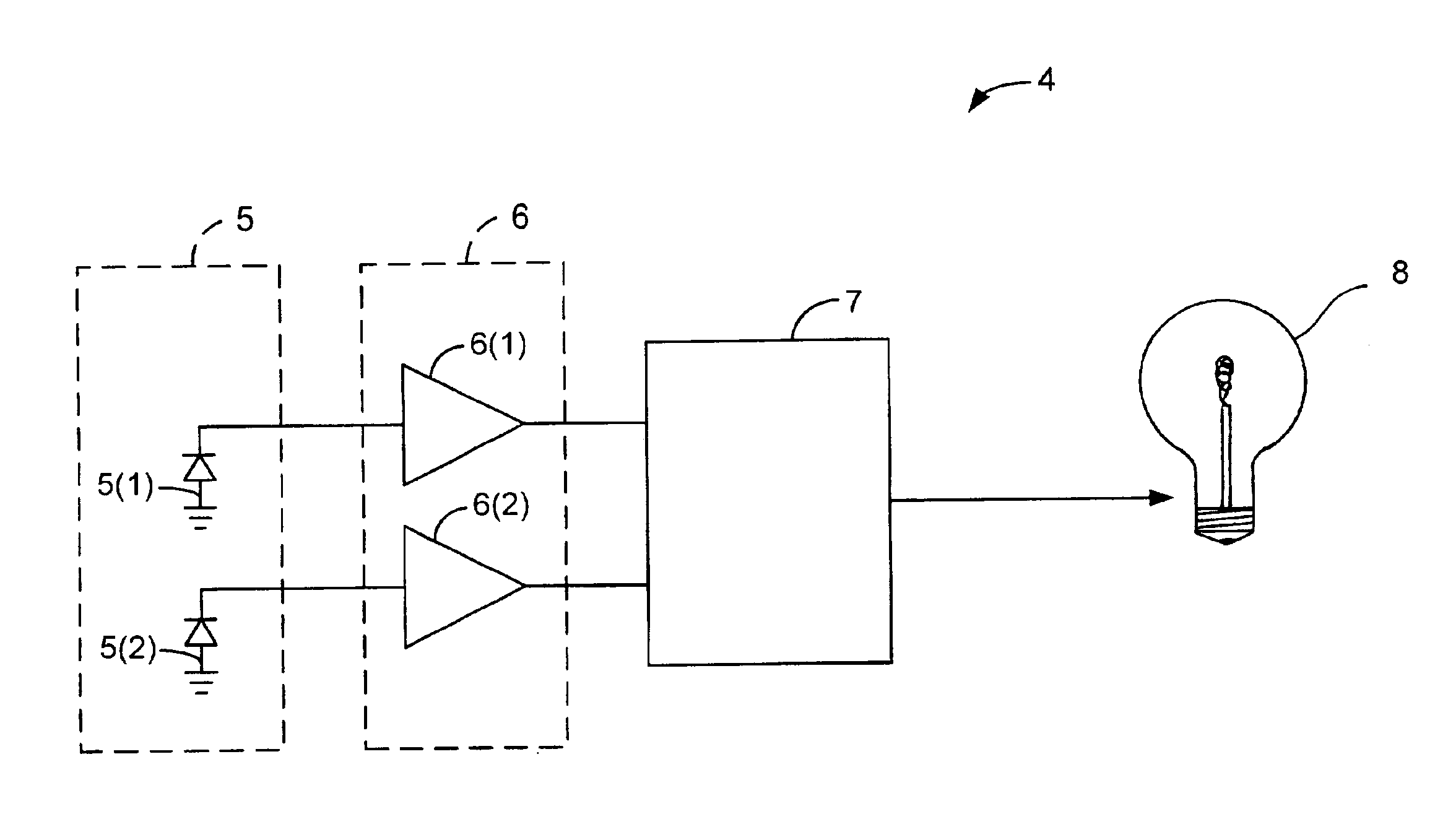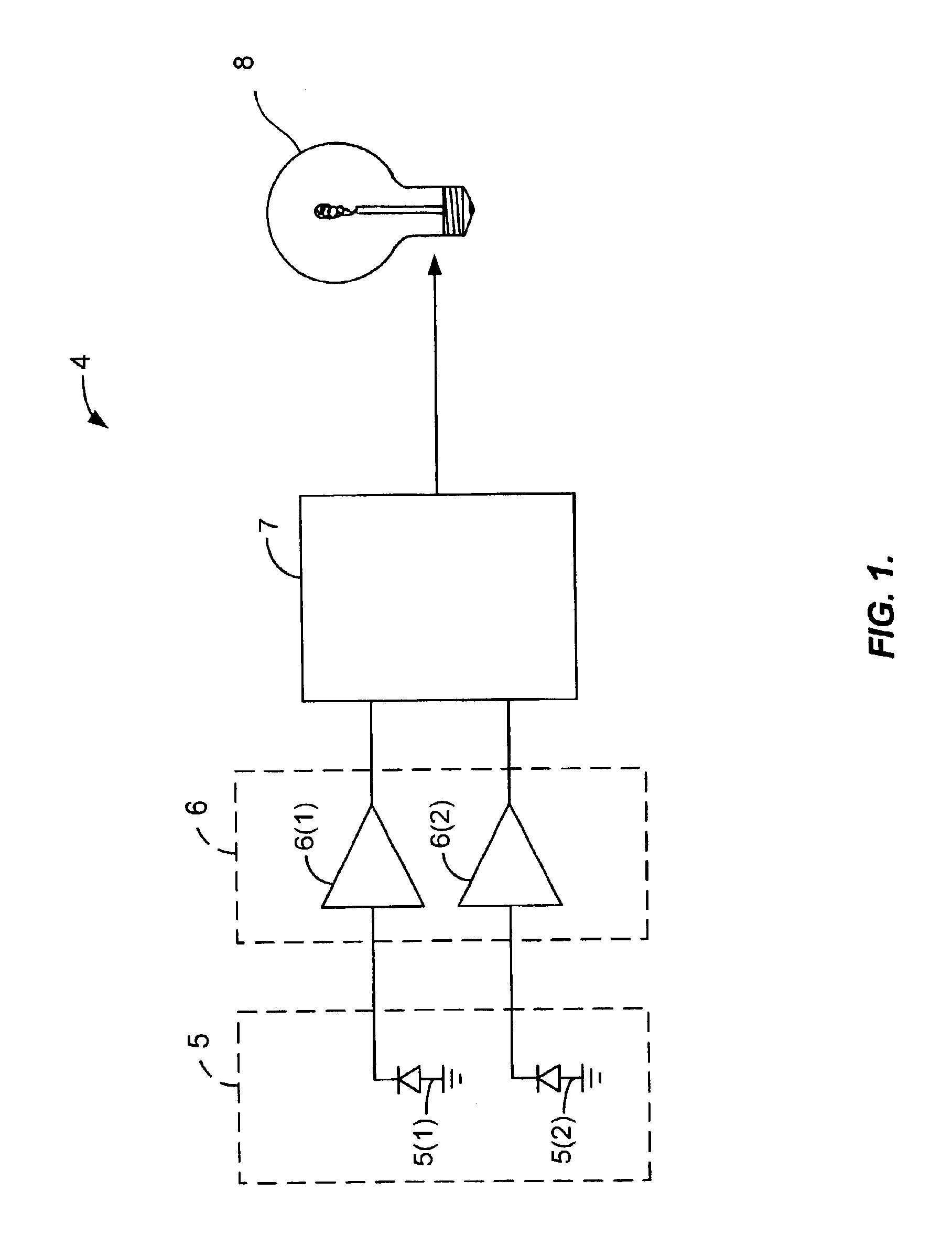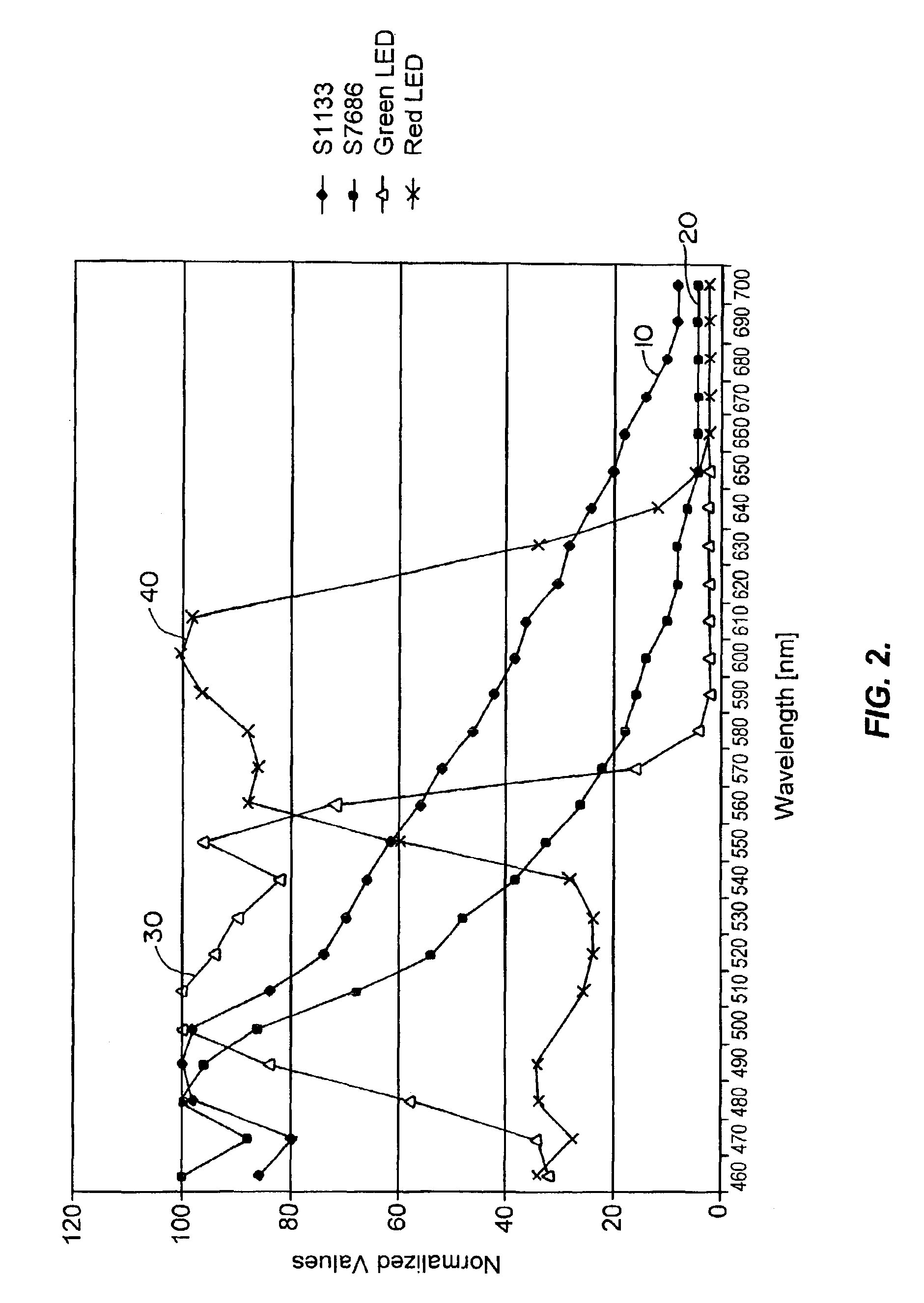Illumination management system
a technology of lighting management and control system, applied in the direction of photometry using electric radiation detectors, optical radiation measurement, instruments, etc., can solve the problems of low illumination, poor assumption, and full dimming of artificial lights
- Summary
- Abstract
- Description
- Claims
- Application Information
AI Technical Summary
Benefits of technology
Problems solved by technology
Method used
Image
Examples
Embodiment Construction
[0019]FIG. 1 shows a simplified high-level block diagram of an illumination management system 4, according to an embodiment of the present invention. Included is a pick-up stage 5, which includes LEDs 5(1) and 5(2). LEDs 5(1) and 5(2) function as pick-up elements for the spectral region of the light in which each of the LEDs would emit light. When LEDs 5(1) and 5(2) are exposed to light, each outputs a signal indicating an intensity of light from its corresponding spectrum. In some embodiments, each LEDs detects light from a unique spectrum. In other embodiments, the spectrums detected by the LEDs can overlap, at least in part. The use of LEDs as light detectors is described in more detail below (description of FIG. 2).
[0020]An amplifier stage 6, which includes amplifiers 6(1) and 6(1), receives, amplifies, and outputs the signals received from pick-up stage 5. A control stage 7 receives amplified signals from amplifier stage 6 and generates a lighting control signal that can be out...
PUM
 Login to View More
Login to View More Abstract
Description
Claims
Application Information
 Login to View More
Login to View More - R&D
- Intellectual Property
- Life Sciences
- Materials
- Tech Scout
- Unparalleled Data Quality
- Higher Quality Content
- 60% Fewer Hallucinations
Browse by: Latest US Patents, China's latest patents, Technical Efficacy Thesaurus, Application Domain, Technology Topic, Popular Technical Reports.
© 2025 PatSnap. All rights reserved.Legal|Privacy policy|Modern Slavery Act Transparency Statement|Sitemap|About US| Contact US: help@patsnap.com



